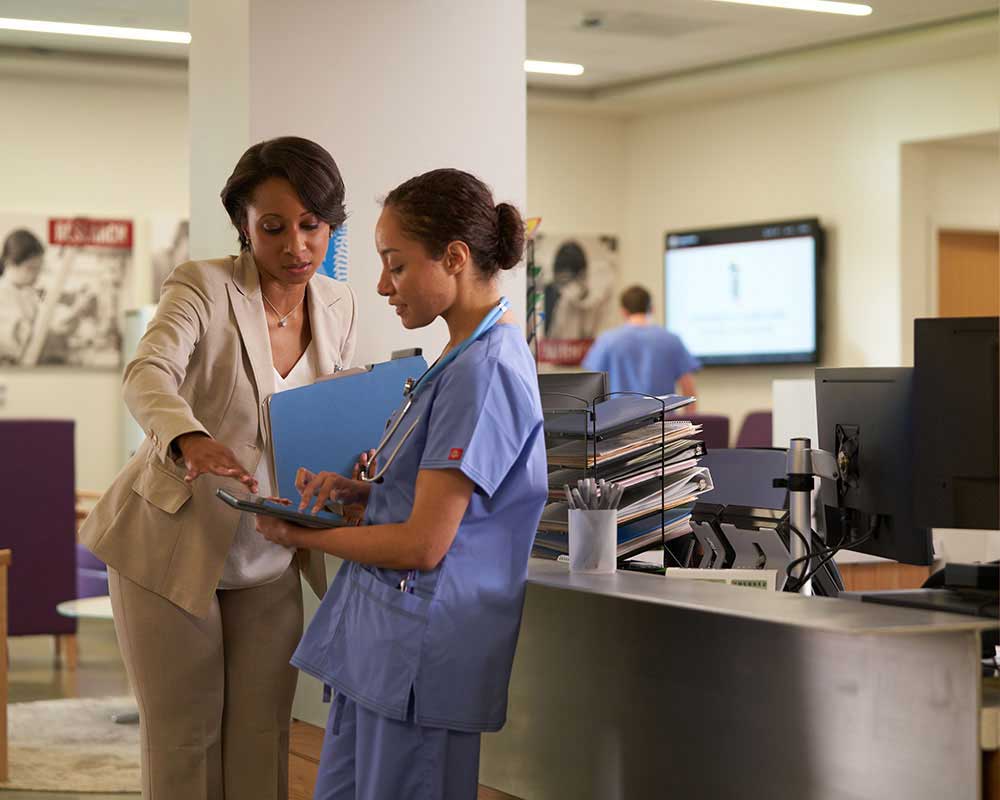Why Medical Administration is Essential for Smooth Healthcare Operations
Why Medical Administration is Essential for Smooth Healthcare Operations
Blog Article
Best Practices in Medical Administration for Improving Effectiveness and Minimizing Costs
In the ever-evolving landscape of medical care, the search of ideal methods in medical administration is vital for enhancing performance and suppressing expenses. By integrating sophisticated technologies such as electronic health and wellness documents and telemedicine, doctor can improve operations and enhance patient care. However, modern technology alone is not a cure all; optimizing source appropriation and fostering joint communication among treatment groups are equally crucial (medical administration). As organizations strive to balance high quality and expense, what techniques should be prioritized to accomplish these dual objectives? The solution to these inquiries hold the trick to a much more sustainable health care system.
Leveraging Advanced Modern Technology
The combination of electronic remedies into medical care systems has changed the method facilities operate, streamlining procedures and boosting patient treatment. By systematizing patient information, EHRs get rid of the requirement for cumbersome paperwork and help with seamless communication among health care service providers.
Telemedicine is an additional technical improvement that has actually reinvented patient interaction. It uses benefit for both individuals and health care professionals by allowing remote examinations, which can reduce the requirement for in-person brows through and enhance visit organizing. Furthermore, telehealth systems can expand health care accessibility to rural or underserved areas, bridging voids in treatment distribution.
In addition, making use of Expert system (AI) and artificial intelligence is becoming progressively common in anticipating analytics, enabling for early discovery of prospective health concerns and even more educated decision-making. These technologies, when incorporated properly, can improve diagnostic precision and individualize individual treatment strategies, eventually bring about boosted healthcare outcomes and functional performance.
Optimizing Source Allowance
Reliable source appropriation is important for making the most of the effectiveness of medical administration. By purposefully managing resources such as personnel, equipment, and finances, health care centers can significantly boost their functional efficiency, enhance person results, and lower unnecessary expenses. The primary step in optimizing resource appropriation entails conducting a thorough assessment of existing possessions and determining areas where sources might be underutilized or overextended. This evaluation needs to be data-driven, utilizing metrics and analytics to inform decision-making procedures.
Prioritizing source appropriation based on client demands and service needs is essential. Implementing versatile staffing designs can also optimize labor sources by changing employees appropriation in response to fluctuating patient volumes.
Financial sources must be diligently monitored and allocated with calculated insight to support both temporary functional demands and lasting institutional objectives. This includes investing in training programs that enhance team competencies and adopting energy-efficient methods that reduce functional prices (medical administration). Ultimately, an optimized resource allowance technique promotes a sustainable health care atmosphere that is responsive, effective, and economically sensible
Streamlining Operations Processes
When health care centers aim to enhance operational efficiency, enhancing operations procedures ends up being a pivotal emphasis. Effective process decrease redundancy, eliminate unnecessary actions, and improve coordination amongst healthcare professionals. This approach not only speeds up service delivery yet additionally improves the quality of individual treatment.

Next, innovation integration plays a substantial role in improving operations. Applying digital health documents (EHRs) and computerized medical professional order access (CPOE) systems lowers documentation, minimizes human mistake, and ensures details comes to all pertinent workers. In addition, leveraging telemedicine platforms can simplify individual examinations and follow-ups, lowering the stress on physical infrastructure.

Eventually, streamlined workflows result in set you back decreases and enhanced patient complete satisfaction, cultivating an extra sustainable medical care atmosphere.
Enhancing Information Management
Building upon streamlined workflows, enhancing information monitoring ends up being an important element ahead of time medical care management. Reliable information monitoring systems are critical for preserving accurate patient documents, boosting decision-making, and guaranteeing conformity with governing criteria. By executing durable data administration options, medical care centers can boost the quality of patient treatment while simultaneously decreasing operational prices.
One secret aspect of improving information management is the integration of innovative electronic health and wellness document (EHR) systems. These systems promote the click here for info seamless exchange of patient info across various divisions, lowering duplication of tests and decreasing errors. A well-designed EHR system supports data analytics, enabling doctor to identify trends and make informed decisions relating to individual treatment.
Furthermore, securing person data is critical. Taking on comprehensive cybersecurity procedures, consisting of file encryption and regular audits, ensures the honesty and privacy of delicate information. This not just protects people yet likewise maintains the institution's credibility.
Buying team training is one more essential factor. Informing health care specialists on information management practices boosts their capacity to efficiently make use of innovation, resulting in explanation enhanced client results. Finally, boosting data monitoring with sophisticated technology and detailed training is crucial for accomplishing efficiency and cost reduction in medical administration.
Fostering Collaborative Communication
A crucial component beforehand clinical administration is promoting joint interaction among health care specialists. Effective interaction is paramount for making sure seamless person care, maximizing treatment end results, and lessening mistakes. By urging open discussion and sychronisation throughout multidisciplinary groups, health care companies can enhance their functional effectiveness and reduce unnecessary expenses.
Central to this strategy is the assimilation of communication modern technologies such as digital health and wellness documents (EHRs) and safe and secure messaging platforms, which help with the fast exchange of crucial client details. These devices make it possible for healthcare suppliers to access and share data in real time, guaranteeing that all employee are educated and aligned in their decision-making processes. Regular group meetings and interdisciplinary rounds can additionally promote a society of collaboration and liability.
Educating programs concentrated on boosting communication skills are additionally important. Eventually, promoting joint interaction leads to improved healthcare shipment and price financial savings.

Conclusion
Integrating sophisticated modern technology, such as digital health records and telemedicine, alongside optimized resource allowance and structured process procedures, is vital for enhancing efficiency in medical administration. Efficient data administration and promoting collective communication among healthcare teams are crucial for reducing redundancies and improving care top quality. By focusing on preventative treatment and involving in top quality enhancement efforts, health care organizations can attain substantial price financial savings and enhanced client results, thus making sure sustainable healthcare delivery in a progressively complicated environment.
Report this page